Ok, so what did you do for the Valentine's Day/President's Day 4-day holiday this year?
I got a wild hair and said to myself, "I love the way it sounds to say Tim-ee-shwar-ah and I can't find anyone who wants to go there, so why not go alone?" So I did some research for the trip and hastily decided to make the 7 hour train ride to the far western city of Timisoara for a long weekend. The city intrigued me from the start of my tour here. Being from Boston, for some strange reason I felt a tie to Timișoara All the history I learned growing up in Massachusetts taught me about the power of the people uprising against a totalitarian government in it's pursuit for freedom. Timișoara was the birthplace of the Romanian Revolution.
The 1989 Romanian Revolution and the Fall of Communist Dictator Nicolae Ceaușescu
I think we all remember 1989 as the year of remarkable popular uprisings throughout the world. Most notably Tiananmen Square in China, the fall of the Berlin Wall in Germany, and the Velvet Revolution in Czechoslovakia. In December of that year, we saw the fall of one of Eastern Europe’s most brutal dictators, Nicolae Ceaușescu; and it did not come peacefully. The Romanian Revolution started in the city of Timișoara on December 16 and spread across the country. One ethnic Hungarian pastor spoke out against the Communist regimes policies. This in turn led to massive student protests and a crackdown by the military. Ceaușescu traveled to Timișoara and made a speech at the Palace (now renamed Revolution) Square, on December 21. People in the crowd, who had been bussed in from all over Romania to show support, began openly booing him and chanting “Timișoara!” Ceaușescu departed the city to return to Bucharest and try to squash the revolt, but it was too late.
Timisoara Orthodox Metropolitan Cathedral in the background
Members of Romania’s ethnic Hungarian minority gathered to prevent Pastor László Tőkés from being evicted from his home as punishment for criticizing the government. The number of protesters soon swelled, and their grievances rapidly grew beyond the original issue. In the ensuing hours; a spontaneous demonstration, a march to a cemetery to pay homage to some of the citizens who had fallen victim to security forces excesses. The government violently repressed the march. When a crowd of protesters defied the mayor’s orders and waved Romanian flags with the regime’s coat of arms cut from the center, the group was fired upon, leaving many dead and many more wounded. It was too late now to stop it, the entire province blew up and the rebellion started to spread like wildfire to other regions.
Try to imagine how very difficult it was under Communist rule for the people to get news out on what was going on. Regardless, in a matter of days the entire country was literally up in arms. Of the 40 provinces, well over three quarters of them were engulfed in revolt. Using whatever method they could, the word of one uprising spread from region to region. Strength in numbers works - people shed their fear of the ruthless authoritarian rule and rose up.
The Ceaușescu regime took its usual 'take-no-prisoners' and 'give-no-ground' approach to these uprisings. They couldn't afford for the uprising to continue. He ordered the security forces to do whatever they needed to do to break the will of this incipient uprising. The people refused to back down. Blood flowed in the streets.
Many members of the military were wearing the uniform only because they had no choice. Durning the Revolution though, thousands of rank-and-file members of the military switched, almost unanimously, from supporting the dictator to backing the protesting population.
Rioting in several Romanian cities forced Ceaușescu and his wife Elena, who was also Deputy Prime Minister, to flee Bucharest by helicopter on 23 December. The new leaders expeditiously dispatched troops to capture the dictators and return them to the capitol city. Before the sentences were carried out, Elena Ceausescu screamed, “You motherfuckers!” while being led up against the wall. At the same time, Nicolae Ceausescu sang “The Internationale”. They were tried and publicly executed on Christmas Day 1989. The Ceaușescus were the last people to be executed in Romania before the abolition of capital punishment on 7 January 1990.
Just 45 days before I traveled to Timișoara the country celebrated the 30th anniversary of the Romanian Revolution and their freedom from oppression. It has taken time but the country is slowly healing from decades of Communist rule. It will take a long time for them to fully recover but the people are resilient and friendly. Their country has so very much to offer and I think in the coming years, you'll see Romania's popularity increase and assist the country in building a brighter and richer future.
Back to my adventure...I thought the history was important for my readers to know.
I got onto my iPhone's Eurail Pass app and figured out the best time to depart Caracal so I can arrive in Timi before dark. Next, let me find a place to stay. There were plenty of really nice hotels in the city but I wanted the full-on Romanian experience. I got onto Airbnb and reserved a suite in one of the old Communist era 'block houses' for the weekend. I contacted my friend, taxi driver Cosmin and asked him to pick me up at the dorm and take me to the train station on Friday at 07:00.
I packed the night before and was ready to go when Cosmin arrived. I got into the cab and talked to him about my trip to Timișoara He asked why because there's not really anything special there like the many sights throughout eastern Romania. I told him I wanted to go there because I don't know anyone who had ever been there. He dropped me off at the train station and I paid my 165 lei (about $40 and waited for the train to arrive.
When it pulled into the station, I got more excited (and a little anxious) to see the cool train. This was my first solo trip for so long although I had spent quite a bit of time on trips with my friends and coworkers. The other aspect I was nervous about was going somewhere and not knowing (because there's not a large English-speaking population) how I'll do on my own armed with my very poor Romanian language skills - and my Google translate.
At first I was unsure which train I would be taking...
After a very long ride in a pretty comfortable Second Class car (there were no First Class tickets on this trip) in which I slept quite a good part of the time, I arrived in the city at about 15:00. I grabbed my suitcase and backpack and started walking to my Airbnb. The suite was a four mile walk away and it was February (hint hint - it was chilly). I could have taken an Uber but I wanted to see the city from this perspective as I strolled through the city center and Old Town. It was a beautiful walk.
The first record of the city of Timișoara dates back to 1212. The city was built on the site of an ancient Roman fortress called Castrum Regium Themes.
Over the centuries, Timișoara which is the largest city in western Romania, has been influenced by many cultures. The Romans used it as an important crossroads fortress until the Tatars destroyed it in the 13th century. Timișoara was under the protection of the Turkish armies from the time they conquered the region in 1552 until 1718 when the region of Banat came under Austrian rule for two centuries. Timișoara became a vital commercial and manufacturing town. The Turks, Austrians, Germans, and Serbs all left their mark. As you walk through the neighborhoods, you can see their influence throughout the city even today.
The charm of this city, which is settled on the northern bank of the Bega River, lies in its architectural character and vibrant cultural life. It has often been referred to as "Little Vienna," and is home to year-round musical and theatrical performances, art galleries, museums, and as I suspect, a buzzing nightlife. I will explain more about the more recent history of the city shortly but it seems to always have been a progressive, cosmopolitan place. It was the first city in Europe and second in the world after New York, to use electricity to illuminate its public streets.
As I neared the city center, I saw the image of this church growing larger and larger as I approached. The size was immense, the architecture was strong, and the ornate decoration was unlike any I had seen before.
Researching what Timișoara had to offer before I departed, I learned construction of this beautiful cathedral began in 1936 by a crew of engineers from Bucharest. Development lasted five years and the project was finished in 1941. To support this stone structure, the foundation is built on a massive concrete slab reinforced with over 1,000 concrete pillars, each buried 66 feet or 20 meters deep. The building is 207 feet (63 m) by 105 feet (32 m) with a total height of 297 feet (90.5 m).
I'll have more pictures of the cathedral later in this page as it is THE focal point in this beautiful city.
Random observation - I was walking to my Airbnb and passed this telephone pole.
As an IT guy, I found it pretty funny. Not sure I'd let my team run cabling like this but it is almost the standard here. 😵
I saw this sculpture in a small park near my suite. It is a tribute to the wounded and disabled soldiers who fought in WWII. Pretty interesting.
Old Town Timișoara. It was a chilly and drizzling day so there weren't too many people out and about on this Friday afternoon. I expect it'll get much busier as night falls, especially since it's Valentine's Day 💛.
Unirii (Union) Square
The main areas of interest in Timișoara lie primarily around this park. This square was formed as a result of the inner area created by the inner city’s defense wall. The defensive fortification wall was made of earth, protected on the outside by a massive timber log fence (for a lack of a better term), plastered with lime. In front of the wall, on the outside of the barricade, was the fortress’ main moat (sans alligators). During the 1716 siege, the wall was damaged but later repaired.
Starting in 1733, the local government began several projects in order to set up a city square here. In line with this plan, in 1740 they began to demolish the defense wall. Subsequently, the city’s moat was filled with earth and the square is paved with natural stone. The last remnants of the fortification existed in the square until 1745 to 1746. It is gone now within the square but I saw vestiges of a fortification wall as I walked back and forth between my Airbnb and the City Center (see the picture of the "Cheers" restaurant earlier in this page).
Sometime soon after 1786, the construction of buildings sealing off the area was completed and Unirii Square became a closed urban area or park.
 |
| The Roman Catholic Cathedral (Catedrala Episcopala Romano-Catolica) |
When I walked into the square, on the east side I saw the Catholic Church. It was built between 1736 and 1754 by architect Fisher von Erlach and represents a fine example of Viennese baroque style. This region of Romania was under Austro-Hungarian rule for many years and their influence is ever-present.
Victory Square (Piata Victoriei)
Some of the city's most interesting sites are its elegant baroque buildings, spread around town and particularly along the main square, Piata Victoriei, which stretches from Opera Square (Piata Operei) to Loga Boulevard.
Across the square, the spires in the background are from the Serbian Orthodox Cathedral
The church was built between 1744 and 1748. The Orthodox Episcopal Church (Cathedral) is built on the site of the old fortifications which were built in the sixteenth century and demolished sometime after 1740. The towers were constructed in 1760, covered with sheet copper, and installed in the years 1791 & 1792.
Until 1865, at the time of the hierarchical separation between Romanians and Serbians, the building was the Orthodox Episcopal Cathedral.
The building is constructed in the Baroque style with Classicist elements, due perhaps to some restorations from the beginning of the nineteenth century. The building has been restored numerous times: in 1903, 1962 to 1964, 1982 to 1983, and 1993 to 2007. I'll have to go visit the church soon but right now - it's dinner time!
This is the most awesome restaurants (BRAK) I have ever been in. It doesn't hurt the painting on the wall was freaking incredible. A Dacian warrior riding a horse while displaying the Draco Flag of the Dacian Empire. Then all the traditional Romanian articles mounted on the brick wall - pretty cool.
Grilled portobello mushroom appetizer and then followed up with traditional Romanian wild boar stew and mamaliga (polenta). YUMMY!
After dinner, I strolled around and left the night to lovers. I headed back to my Airbnb and wrestled with the cable throughout the night before I finally gave up and went to bed. It had been a very long day.
The next morning I woke up and headed out for more exploration. Today - Iulius Mall. The best mall I've ever been in, whether here or in the States.
Below are the Food Court pictures. It was so large I could barely see from one end to the other (you know, curvature of the Earth stuff). It's been over a year since I've had Chinese food - so 'Chinese Fast Food' it was! It was GREAT.
A couple of old familiars below.
Time to go on a walkabout again - back to City Center!
St. Mary and St. Nepomuk Monument
This monument has two names and both are used depending on which history you learned: “Saint Mary Monument” and “Saint Nepomuk Monument".
This statue actually replaces another from 1756, the older and more modest statue represented Stain Nepomuk, patron saint of Catholics in the Banat Region. Evidently the first statue was carved in low resistance sandstone and started deteriorated pretty quickly. It was replaced with the delightful statue I see today. Over the years, the old Nepomuk was moved to different places around the city, finally ending up in the Catholic churchyard in Fabric district of the city.
The plague of 1738-1739 cost the lives of around 1,000 of the 6,000 inhabitants of Timişoara at the time. Following 1739, the city administration represented swore a solemn oath to do various good deeds as a sign of gratitude for the cessation of the epidemic - this statue was one of them.
The monument of the Holy Trinity
The Monument of the Holy Trinity (“the plague monument”) and thUnirii Square fountain are positioned in the middle of Unirii Square.
The statue of the Holy Trinity is considered to be the most outstanding monument of Baroque art creation in Timişoara. Presumably (based on stylistic analogies with other works) it is a creation of Viennese sculptor Georg Raphael Donner.
The statue was brought to Timişoara from Vienna in 1740. The motivation for the monument was the commemoration of the major problems which had hit Timişoara during the war with the Turks between 1737 to 1739. The sculpture must have cost a large sum of money for a city which was far from the prosperity others in Western and Central Europe presented. Similar monuments were very common during the Baroque period in the Catholic areas of Austria and southern Germany.
The monument’s base is a three sided pedestal; on each side there are figurative Baroque reliefs representing plague, famine, and war. On the pedestal’s corners, namely on consoles supported on volutes, are statues of the saints Rochus, Sebastian (the one with the arrow) and Karl Borromeus.
In the center rises a beautifully carved column; at its base St. Ioan of Nepomuk is represented, and below it there is Saint Rozalia. At the same height as Saint Nepomuk, but on the other sides of the column, there are King David and Saint Barbara.
The column is topped with an Ionic capital, on which resides the Holy Trinity thrones.
As I stated earlier, the statue came to Timişoara in 1740. It had to have been placed somewhere else in the city in the beginning because, according to what is available to read, Unirii Square was still a far from finished construction site in 1740. It's a beautiful statue and I'm glad it has survived.

I had to seriously contemplate how long I would spend in a Romanian jail for stealing this statue outside the restaurant I ate at last night. Thinking it out carefully, I decided it wasn't worth it. If you want to see what a jail is like here, watch "World's Worst Jails and look for the Craiova Prison.
This street musician was out of this world, on a piano older than I can even imagine.
Here's the handicap statue - a better picture. I was walking by again on my way to dinner.
Grilled whitefish with rice and a tomato salad (and the obligatory local white wine).
Nutella clatite (crepes) are always a great dessert!
It's now Sunday morning, time for me to visit some of the other sites I've come here to Timișoara to see - namely the Communist Consumer Museum on the southern part of the city. It was a four mile walk with plenty to see on the way. Walk with me please...
Walking into Olde Town, I was amazed by the Austrian / Boroque architecture. The city was coming alive and the streets started to fill with families enjoying the spring-like weather.
I couldn't pass up the opportunity for a cappuccino and a pastry.
Dauerbach Palace
Look who I found in the center of Old Town, Vlad the Impaler!
Huniade Castle
I wanted to visit Huniade Castle and after walking around for almost an hour in the part of the city I 'thought' it was supposed to be, I found it! But it was closed for renovation. It wasn't marked or identified anywhere as being the castle. I asked some people and they said it was closed to visitors several years ago pending a renovation but they felt it would never open again. WTH!
Here's a brief history of what I learned about this structure, it's actually pretty cool.
- 1307 - 1315 (or 1314), Charles Robert of Anjou, King of Croatia, Dalmatia, and Rama, and since 1308 King of Hungary, built “with Italian craftsmen” (according to historical tradition) a brick castle, located largely in the courtyard of today’s building.
- 1315 - 1323 (1316 - 1318, or 1325 according to other sources) – the castle served as a royal residence.
- 1443 – Damaged by an earthquake.
- 1443 - 1447 Ioan de Hunedoara takes up residence in Timişoara and restores the castle. If you remember one of my earlier blog posts, Ioan (John) of Hunedoara was the King who built Corvin's Castle. Hunyadi invaded Wallachia and dethroned Vlad Dracul in December 1447. If you want some great reading, please see the information at the link below.
All over Romania you can find Romulus and Remus statues
Bega River
The Elisabetin Romano-Catholic Church
According to their website, on June 12, 1912 (the month dedicated to the Sacred Heart of Jesus) the construction of the church began. Works were stalled because of World War I, and later resumed in the spring of 1919. The church building is dominated by the two towers, both 187 feet (57 meters) high.
I made a new friend, I'm not used to seeing cats because of all the stray dogs in Romania. There were no dogs here except those on leashes. It was kinda nice not to see all the poor mistreated and hungry dogs.
The Communist Consumers Museum is designed as a typical Romanian apartment from that era, with a living room, children's room, kitchen and hallways. It displays on shelves, in closets and drawers most of everything that Romanians could buy before the revolution of 1989, from toys to vinyls, TV and radio sets to bicycles, kitchen attire and much, much more. After traveling through time in the museum, if you want to hang around, you can also enjoy a nice relaxing time in the upstairs bar. The 'curators' were really nice and showed me around before leaving me on my own so they could go back to standing bar.
Relax and take a tour of the museum through these pictures. It was cool, but different.
Gas mask, just what every good Communist home should have!
I found this chandelier pretty interesting. I wonder if I could recommend one of these at home?
My visit at the museum was over, it was pretty cool seeing how people existed in Romania under Communist rule but now it was time to wander back, enjoy the architecture, and find something to eat.
I know I was curious from the first days I arrived here about what the Communist-era block apartments looked like inside. Every weekend I would travel to nearby Craiova for my weekly shopping excursion or on my frequent trips into Bucharest I would walk by the massive apartment complexes and wonder how people lived. I remember the same concept executed in the States during the 60s and they were an abysmal failure. Well, I got my chance by renting a block apartment for my four-day weekend. Here's a few snapshots from entering the complex to a tour of each room.
Coming through the exterior doors into the stairwell leading to the upper floors. There was no elevator here.
Walking into the front door, you enter the kitchen area. There's a tiny stove/oven right next to the water heater and radiator (typically European). This is pretty nice. They have done some upgrades like the ceramic tile throughout. There's an unusually large refrigerator (for here) and you can see the washing machine under the counter near the sink. I'm pretty sure Americans wouldn't go for this, plus our washers (there's no dryer here) are much larger.
Leaving the kitchen, I walk into the living room. Outfitted with a television, desk, coffee table, and a sofa. Other than the television (which barely works), everything else dates back several decades.
The bathroom fills the needs of a single person or a couple. Anymore than two and we'd be hard-pressed. I'm not complaining, just pointing out the differences between what we are accustomed to and what people here were forced to live with. This is not bad but I'm sure the owner has done quite a bit of work to make it look as good as it does. Thirty years ago, it was a completely different story.
The last room in the apartment is the bedroom. The door is pretty neat. The mattress is filled with straw and broken springs and I'm sure it dates back to the 60s.
I asked some Romanian friends how, when the Communist Party was overthrown thirty years ago, did the new government deal with the sudden problem of 'ownership' of property such as this. They said in the months following the fall of Nicolae Ceaușescu, the new government offered people the opportunity to purchase the homes and apartments they were presently living in or to file suit for properties their families owned before the Communists came to power.
When I first saw this structure, I thought it was some cool ancient fortress tower. Little did I know it was a water tower - how cool is that! And there's a story behind it too.
It was built from 1912 to 1914
The domestic water supply was always a major problem of Timisoara City. In a brief description from 1551, it mentioned a deep well located in the premises of the castle. The archeological diggings from the castle yard, carried out in 2009 revealed a well but no one could be certain if this was actually the well described in 1551.
The Turkish traveller, Evlia Celebi, stated in 1660 the 'Timiş' river (actually it was the Bega River, whose branches mixed at that time with the Timiş River branches, and therefore was often referred to as the 'Timişul Mic' River) was flowing in two places in the fortress by means of the filters. This was from where the inhabitants took their drinking and cooking water. Unfortunately, the "Timis" River was also the garbage dumpster since they hadn't invented sewer systems yet. The researchers were pretty sure the water filtration was a positive fact, considering in a Northern European city, such as Hamburg Germany, the domestic water started to be filtrated only after the cholera epidemics in 1892, which took over 9.000 lives in this one town!
 After the project of building an aqueduct intended to bring the water from Girmata was completed, a "hydraulic machine" was designed and built on a small island in the Bega River. Here, after being passed through a sawdust filter, the water coming from the Bega River was pumped into a water supply system consisting in two wooden pumps. They had two of these pumps because one would always function while the other was being cleaned or repaired. This system supplied the domestic water for the fortress. In 1774, a water tower, which you can see on the current official emblem of the city, was built on the location of the "hydraulic machine" Unfortunately, the water tower was destroyed during the siege of 1849. Now the water supply to the fortress had to be provided by wells until a new solution was determined. In 1892, when the concept of the city being a 'military fortress' any longer was abandoned, the city leaders brought to the table the idea of developing a "modern" water supply system. Numerous projects were drawn up.
After the project of building an aqueduct intended to bring the water from Girmata was completed, a "hydraulic machine" was designed and built on a small island in the Bega River. Here, after being passed through a sawdust filter, the water coming from the Bega River was pumped into a water supply system consisting in two wooden pumps. They had two of these pumps because one would always function while the other was being cleaned or repaired. This system supplied the domestic water for the fortress. In 1774, a water tower, which you can see on the current official emblem of the city, was built on the location of the "hydraulic machine" Unfortunately, the water tower was destroyed during the siege of 1849. Now the water supply to the fortress had to be provided by wells until a new solution was determined. In 1892, when the concept of the city being a 'military fortress' any longer was abandoned, the city leaders brought to the table the idea of developing a "modern" water supply system. Numerous projects were drawn up.
Many engineers submitted suggestions but the solution designed by local engineer Stan Vidrighin (who was the mayor of Timisoara City from 1919 - 1921 and from February 3rd 1922 to August 31st 1922, and who also went blind in the Communist concentration camps), was selected. From 1904 to 1907, Mr. Vidrighin drew up the projects for the water supply and drainage systems in Timisoara. In 1910 he was sent to study, in the field, the water supply and drainage systems used in cities like Dresden, Berlin, Hamburg, Köln, Strasbourg, Karlsruhe, and London. Mr. Vidrighin designed and then developed the water supply and drainage systems of Timisoara. These systems, which were first operated in 1912 and completed in 1914, are still functional today.
Sadly, the weekend has come to an end and I must head back to Caracal. My Eurail app tells me I'll pull out at almost 14:00 and arrive back in Caracal severn and a half hours later. This time I took an Uber to the train station, I'd done enough walking over the last three days and four more miles was pushing my limit.
Getting onto the train, I saw it was brand new - how awesome! The car was nearly full but it was a comfortable ride.
There was a guy walking up and down the aisle selling sandwiches and drinks and snacks. The scenery was cool (until it got dark) and the ride seemed a lot shorter going back.
Here's a great look at the Danube with the sun setting in the west.
The Caracal train station at nine thirty at night is pretty desolate while I wait for Cosmin to take me back to the base. It was an awesome weekend and I love Timisoara. I know it's not a hot tourist destination but it's a fantastic city I'd love to visit again.
Last minute entry - is this one of the most incredible t-shirts ever?




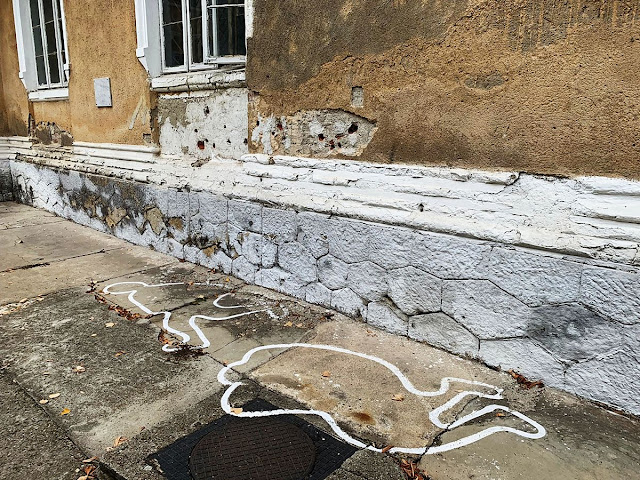



















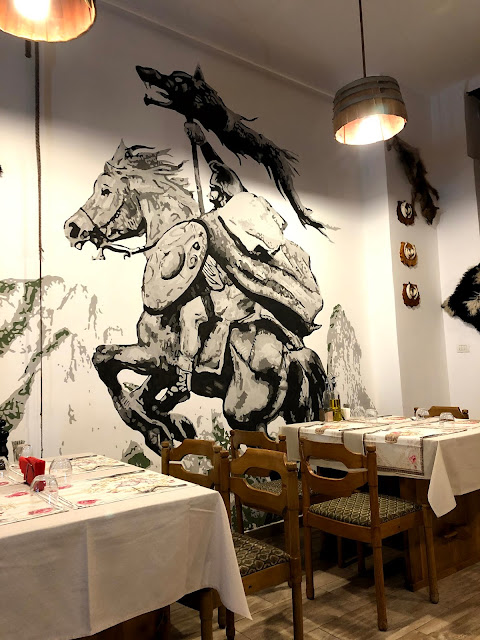





















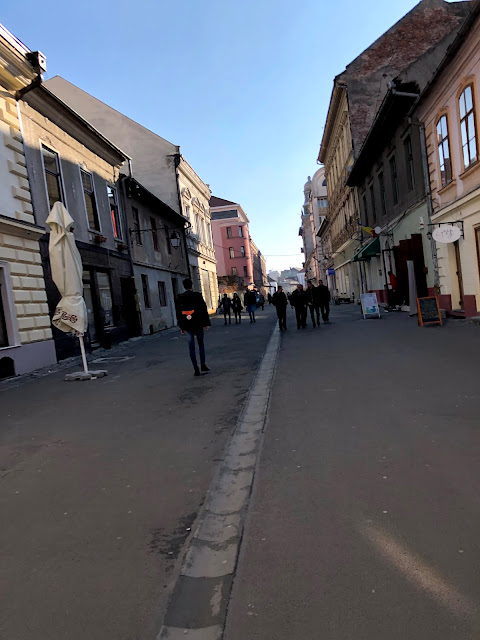











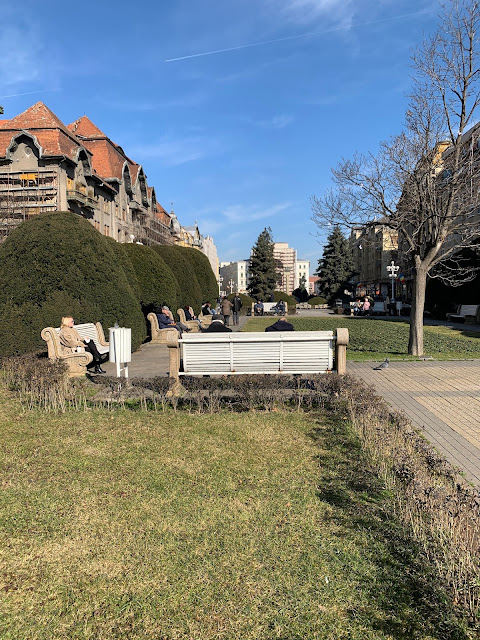







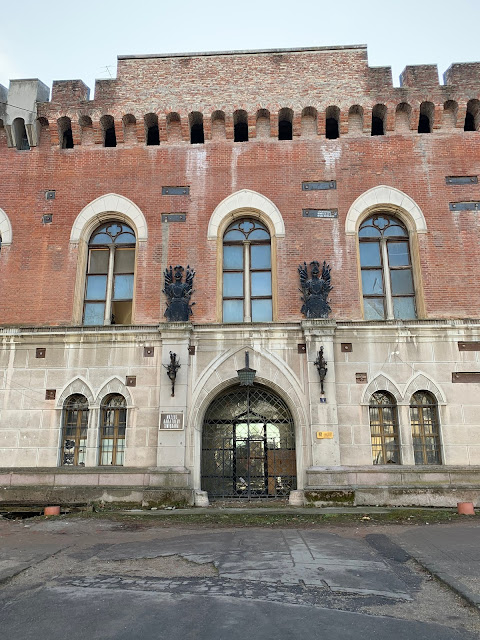



















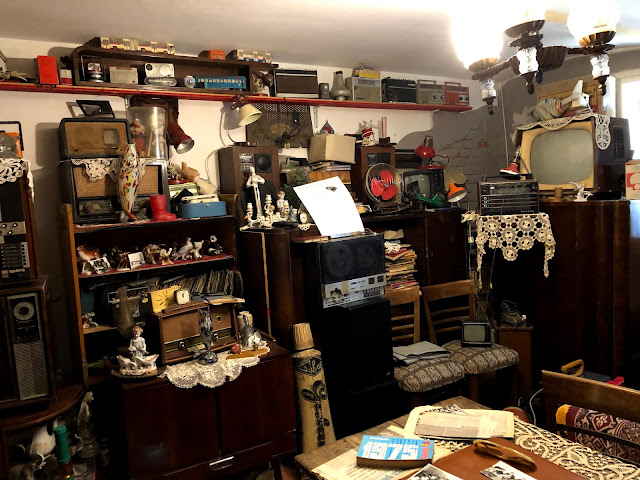











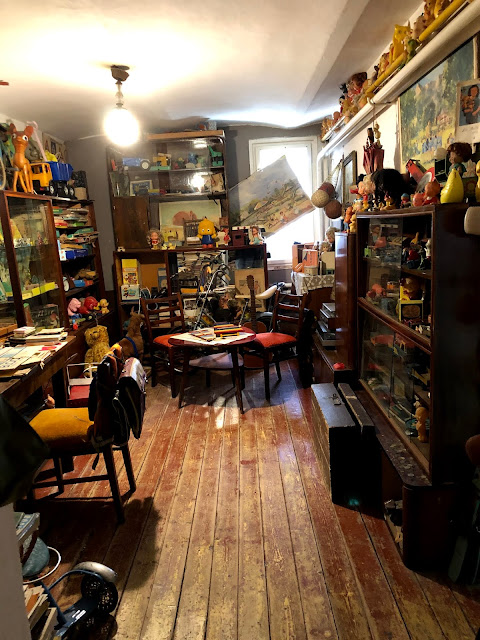


















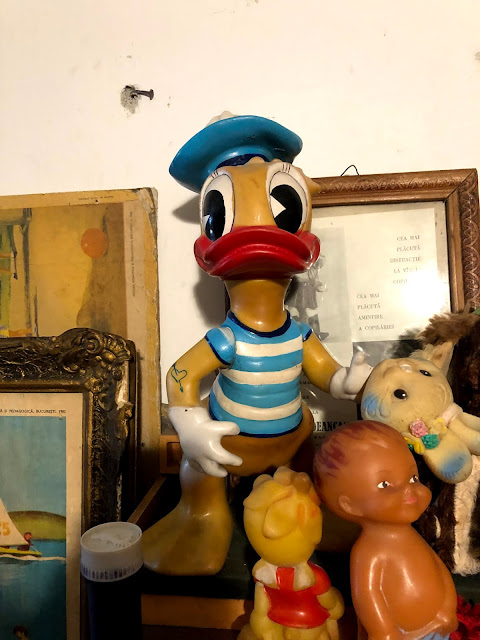




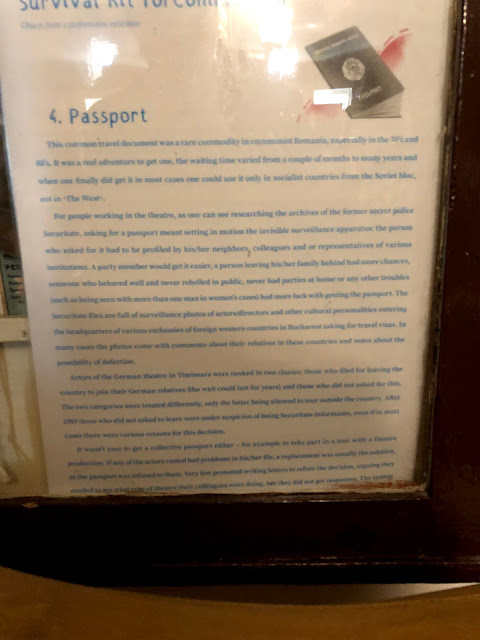






















































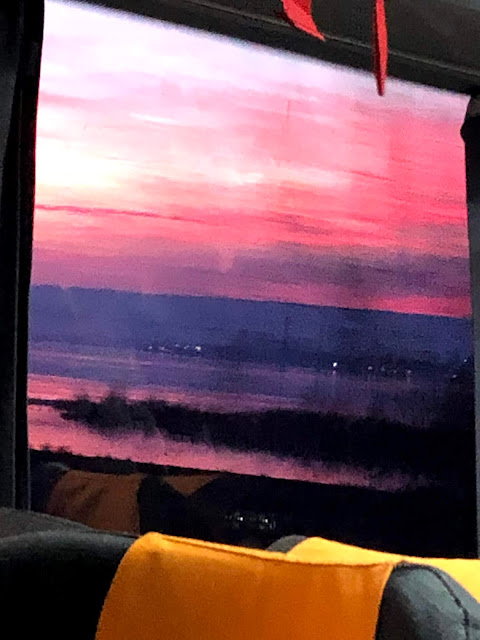



No comments:
Post a Comment